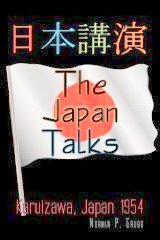 "Furoshiki," the wrapping cloth used since ancient times, is increasingly being viewed as highly suitable for modern life, as more people become environmentally conscious and try to reduce the amount of waste related to use of paper and plastic bags.
"Furoshiki," the wrapping cloth used since ancient times, is increasingly being viewed as highly suitable for modern life, as more people become environmentally conscious and try to reduce the amount of waste related to use of paper and plastic bags.Proving the old adage that anything old can be new again, clothing companies have modernized furoshiki patterns and are marketing their products even at railway station shops. Prices start at just a few hundred, yen attracting young and old alike.
A Yokohama woman in her 30s has long used furoshiki for wrapping clothing and unde
 rgarments in a bag when traveling, but she recently began using it for wrapping presents, in place of wrapping paper.
rgarments in a bag when traveling, but she recently began using it for wrapping presents, in place of wrapping paper."With today's great patterns and materials, it's really a pleasure for me to use furoshiki. They can be very fashionable, and those who get them are pleased," she said.
Furoshiki can be used almost indefinitely and take up little space when folded.
A Tokyo woman in her 60s said, "It's convenient to always have a furoshiki with me because it can wrap things of many sizes."
Tokyo department store Printemps Ginza Co. held a furoshiki fair in early June, and sales have been favorable since. Before the fair, employees used furoshiki to wrap items for their daily commute and at the store to promote the product.
"Of course female employees were not hesitant, but even male employees said they have rediscovered many good points about furoshiki," a Printemps representative said.
Before the fair, only about 10 furoshiki were purchased per month. During the two-week event, however, 800 were sold, and since then the store is moving around 50 a month.

At Mitsukoshi's department store in the Ginza district, tourists often buy furoshiki just for display, prompting the store to promote the product also for a table covering or as a scarf.
"The number of people buying furoshiki as a gift has been increasing," Teppei Itawa, in charge of sales at Mitsukoshi, said. "This is no temporary boom . . . the use of furoshiki appears to be firmly in place."
The Japan Furoshiki Association, which is working to popularize the wrap, said inquiries from department stores and government bodies about holding wrapping lessons have been increasing since the start of the year.
http://search.japantimes.co.jp/mail/nn20060928f3.html



































